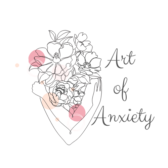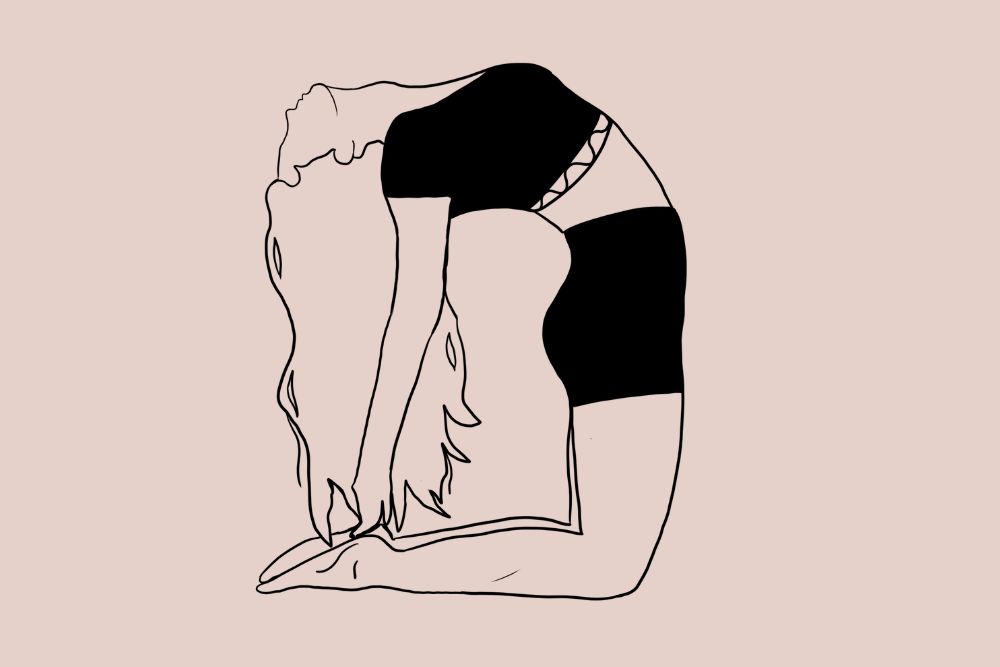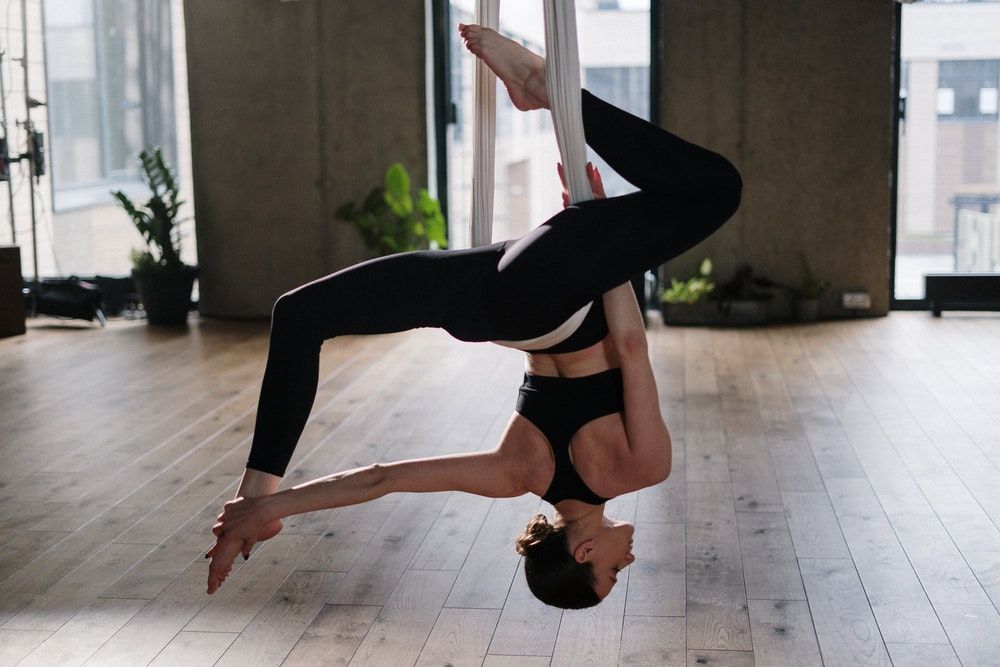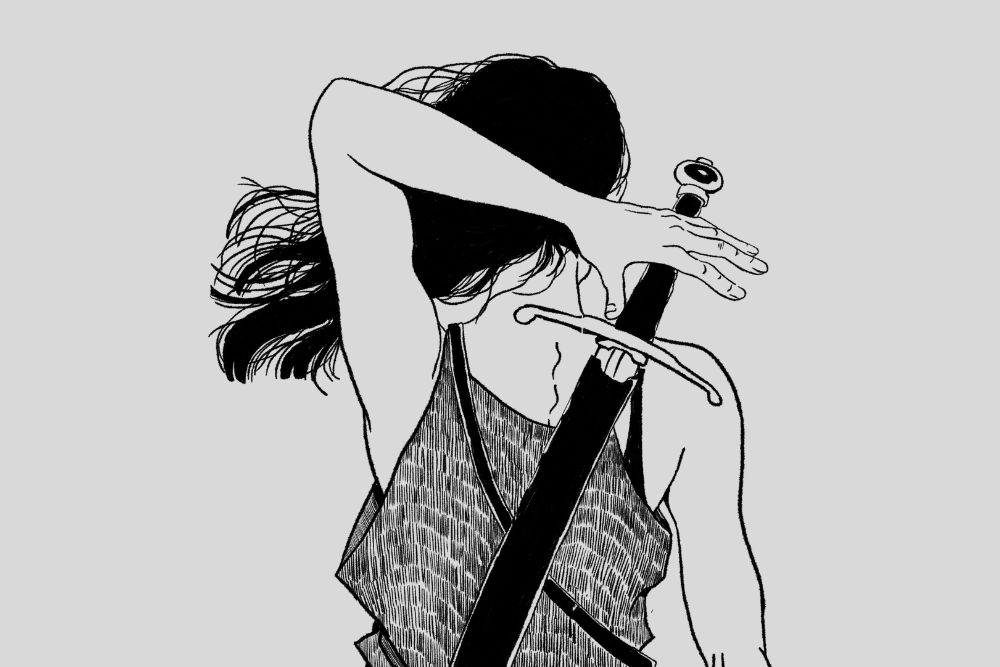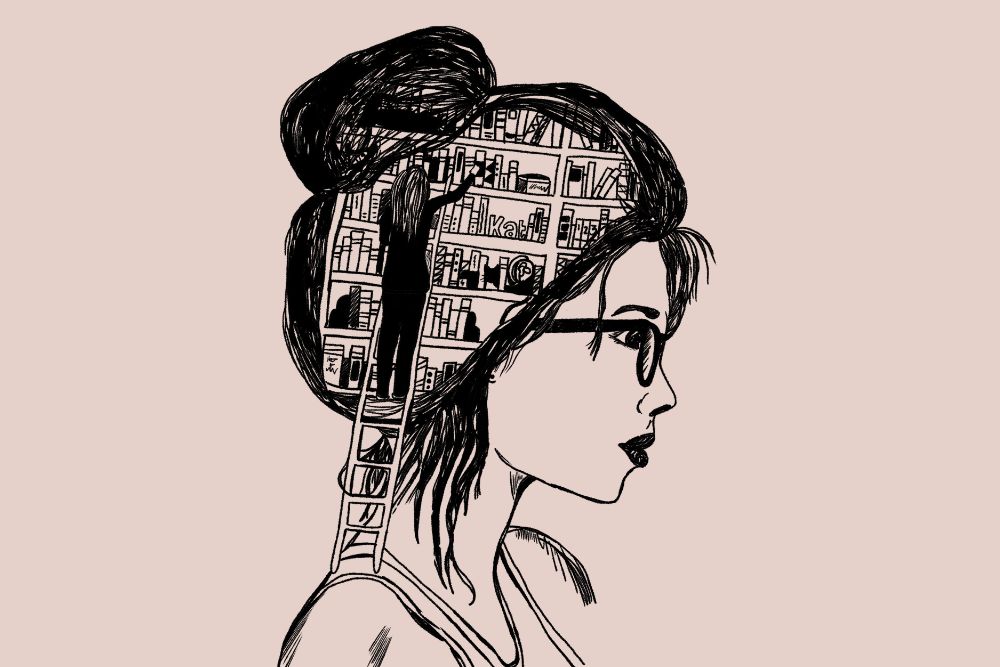Yoga for anxiety and panic attacks is one of the best tools I’ve found for mastering my mind. It has numerous benefits for your mind and body.
It took me a long time to get into yoga. My psychologist, occupational therapist, chiropractor, and multiple psychiatrists suggested I try it out, but I was stubborn. But it changed my life and drastically improved my mental health.
Anxiety can take over your life, making each moment exhausting, draining, and sometimes even unbearable. Your mind keeps spiraling about the past and the future, giving you no time to just be.
Yoga brings you into the present. It demands your full attention at that moment. If you’re not fully there, you won’t be able to keep up with what’s happening. It encourages self-care, quieting your mind, and trusting your body. As a practice, yoga allows you to enjoy the present, accept the past and embrace the future. It has been a massive part of my journey to master my anxiety.
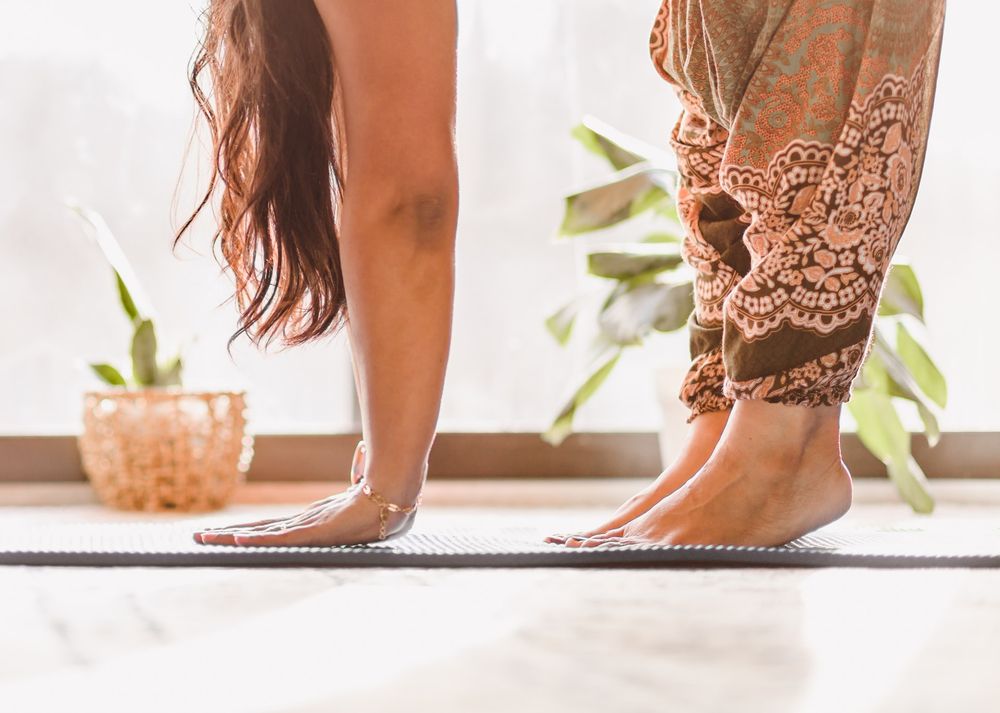
Reasons Not To Do Yoga
I resisted trying yoga for a long time. There were a couple of reasons besides the fact that I didn’t think ‘anxiety stretches’ were a thing.
- I don’t like being told what to do
- I’d always hated exercise and sweating
- I was scared it wouldn’t help (or it would make it worse)
At the time, I had a very limited idea of what yoga was. I labeled it as exercise, and my body had never been great when it came to exercise. Often I’d get injured, tired, and sometimes even sick. Also, getting my heart rate up felt way too similar to a panic attack.
If you’re resisting or don’t want to do yoga, that’s pretty normal. But I would recommend trying it out. There are so many different types of yoga that you’ll likely find one you like.
Reasons to Try Yoga for Anxiety and Depression
Yoga has numerous benefits and not just for your physical body. It can improve your emotional and mental health as well. It’s also great for posture, teaches sensory regulation exercises like breathing techniques, and improves mobility.
1. Reduces Stress and Anxiety
One of the biggest appeals of yoga for anxiety and depression is that it can help reduce stress and anxiety. Yoga is designed to help you relax, connect with your body and manage symptoms that come with anxiety. As such, it supports stress management.
Restorative yoga classes are designed to trigger your parasympathetic nervous system. After spending time resting and digesting, your cortisol and adrenaline levels will be much lower. It can also activate your vagus nerve.
A type of yoga, like Bikram, is great for increasing energy and reducing stress.
2. Assists with Sleep
The after-effects of exercise can help to improve sleep. Yoga assists in calming your mind and offering stress relief.
Yoga can help prepare your body for sleep by putting you in the right mindset for rest. If you have insomnia, a yoga session can help you sleep better. It allows you to fall asleep and stay asleep.
If you’re looking for the best yoga for anxiety and sleep, Yoga Nidra is especially useful.
3. Yoga is for You
Yoga is made for humans. It takes into account feelings, sensations, emotions, and you. A huge part of yoga is thinking about yourself. It’s your body, your practice, and you only do what you can. Nobody knows your body better than you. Yoga just helps you to become more in tune with your body.
During yoga, your only responsibility is yourself, and the only person that matters is you. A lot of people with anxiety spend their lives thinking about other people.
4. You Learn About Your Body
You’ll learn where you’re flexible and where you’re tight. Discovering that one side of your body is different from the other is an interesting experience.
Yoga increases body awareness through the use of both big and small muscle groups. As a result, you’ll be able to isolate specific areas of your body. This can be exceptionally useful when you’re feeling out of control.
5. Improves Balance
Whenever I’m feeling anxious, I often feel out of balance. One common symptom of panic attacks is dizziness, so having good balance can help you feel stable.
Building balance is crucial as you get older. It not only gives you greater control over your body but also reduces the risk of injury.
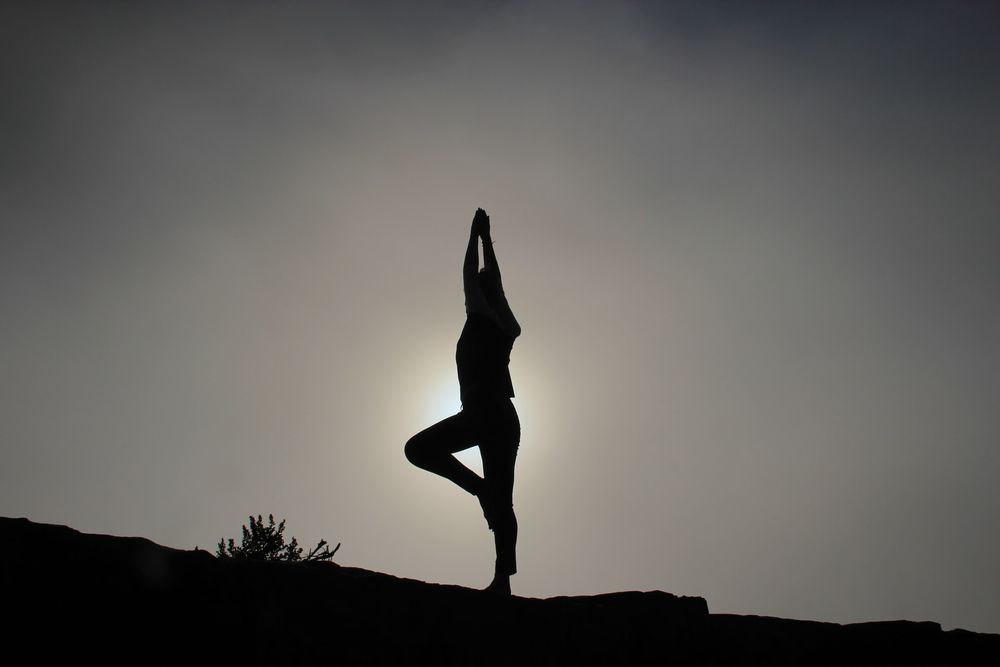
6. Increases Energy
If you suffer from depression, you’ll know how draining it is. Having low energy is a big part of ‘the big sad’. Anxiety, on the other hand, comes with a lot of negative energy. Yoga helps you to challenge this healthily. Anxiety can also be draining, sucking all your energy into panic spirals.
A good yoga class will make you feel energized rather than drained. It can help boost both alertness and enthusiasm. Even though the session takes energy, it will also leave you with energy.
If you’re really lacking any sort of energy and just want to lay on your bed, then restorative yoga is a must. You’ll be able to lie on the floor guilt-free for 75 to 90 minutes and will likely leave the session with higher energy levels.
Yoga is also useful in fighting fatigue. Various asanas (yoga poses) assist in pumping oxygen-rich blood to your organs and muscles. Classes with a lot of inversions can particularly help to increase energy.

7. Mindfulness
Yoga and meditation go hand in hand. At the end of every yoga session, you go into savasana or the final resting pose. This period of time allows your body to rest and absorb the benefits of your yoga practice. It gets your heart rate back to normal and welcomes you back into your mind.
In a practice like restorative yoga, you’ll have a lot of time to practice mindfulness through resting poses. This type of yin yoga is designed to help you rest and restore. As such, you don’t move a lot. It’s all about letting go of your mind.
After some time, you’ll reach a point where you’ll be able to lie in savasana or similar poses with nothing on your mind. As someone with anxiety and racing thoughts, the silence I achieve from restorative yoga and even a short savasana is vital for my mental health.
In my opinion, savasana is one of the best yoga poses for anxiety and depression.
8. Gets You Out of Your Head
Fast-paced forms of yoga can get you out of your head. As with other forms of exercise, yoga gets your heart racing. But unlike running, it doesn’t push your body to the point where you can feel like you’re about to have a panic attack.
Yoga invites you into your body. But it does so safely, unlike a panic attack that forces you into your body and makes you want to run away from it. Yoga lets you settle into your being in a way that feels safe.
9. Pressure Points
Types of yoga, like restorative or aerial yoga, push into pressure points. This action can assist in relaxing your body. They work into areas of your body that usually get neglected, releasing tension you might not even know you had.
The physical feedback you get from props like bolsters or sandbags can help you fall into deep relaxation. In aerial yoga poses, the deep pressure from the hammock offers tactile feedback similar to a tight hug.
10. Find Your Tribe
One of the most unexpected benefits of yoga for me was finding people like me. Since many humans with anxiety and depression go to yoga, it made me feel less alone. Doing an activity with other people can ease feelings of loneliness.
But finding my tribe didn’t happen immediately. It only came to fruition when I joined a specific class that suited me and what I wanted. There is also a strong environment of group healing and support in the yoga community.
Note: Anxiety can be isolating. So, chatting with other people with anxiety and depression can help you feel less alone. You can also learn from other people who have mastered their minds.
11. Build Self Confidence
Yoga brings you in touch with your body. Every time you go to a yoga class, you improve. Over time, you’ll find yourself able to do things you’d never thought possible. You’ll learn your body’s strength and where it needs work.
Yoga will help you grow your self-confidence and improve your perceived body image.
12. Strength, Stability & Stamina
One of the most significant benefits of yoga is that it builds strength, improves stability, and ups your stamina. While these might not seem like the most important things, as you get older, these things become necessary.
In yoga, slower is better. The slow movements and deep breathing increase blood flow and warm up your muscles, allowing you to develop greater control over your body. When you’re feeling anxious and out of control, the skills you learn in yoga can help you bring yourself back to the present.
If you take care of your body when you’re younger, it’ll be a lot kinder to you when you’re older. Holding the poses can help to improve strength. It also helps to release tight muscles.
Understanding Yoga and Anxiety
Yoga and anxiety work well together. What’s great about this form of exercise is that there are so many yoga poses to relieve stress. Plus, there are many reasons not to do yoga, but there are far more reasons why you should.
I honestly believe there is a type of yoga for everyone. Whether you’re into fast-paced exercise or lying on the floor, it’s worth giving yoga a try.

Kathryn is the creator of Art of Anxiety. She was diagnosed with GAD and MDD at 16 and has been working every day to master the art of anxiety ever since. Her favorite things to do are aerial yoga and hanging out with her cats while reading a good book.
